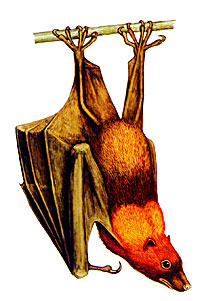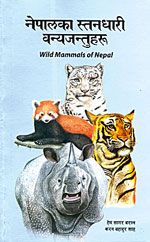 |
The fact that the Nepali word bagh is used fairly interchangeably to mean both tiger and leopard across Nepal shows just how disinterested we have traditionally been in wildlife taxonomy.
Just as we couldn't be bothered to remember all the names of Himalayan peaks, we lump them all together as bagh, even though there is a different word in our own language for leopard, 'chituwa'.
Hopefully, this lack of interest and a more general interest in mammal conservation will to some extent be addressed by a new book, Wild Mammals of Nepal.
There are at least five books on Nepal's diverse birdlife, there are numerous volumes on butterflies and plants but somehow our mammals have fallen between the cracks. Naturalists Hem Sagar Baral and Karan Bahadur Shah have therefore not just done a great service by bringing out this volume, but also by producing it in Nepali. As has so often been the problem, environmental awareness has been the domain of the educated elite, and conservation has followed a top-down approach.
But more and more, awareness about conservation in the buffer areas of national parks, nature clubs set by youth in rural areas and programs on the FM radio network have made people across Nepal much more aware of Nepal's unique biodiversity.
 Wild Mammals of Nepal Hem Sagar Baral Karan Bahadur Shah WWF, NNCT, IUCN, Himalayan Nature |
Wild Mammals of Nepal shows us just how diverse the animal kingdom is in this country. Did you know that there are at least 55 species of bats and one fourth of all mammal species found here are rats and shrews? Also, that there are at least eight types of flying squirrel in this country? There are 209 types of mammals found in Nepal, another 24 (mostly bats) that should theoretically be found here but haven't been sighted yet.
The bilingual listings of mammals is informative even if it is just to browse through. Besides celebrity mammals like tigers (found only below 2,000m) and snow leopards (found as high as 5,600m) there are the less charismatic but rare ones like the Dhole wild dog that has been all but wiped out. And the rarest of them all: the Ganges River Dolphin, the only fresh water cetacean in Nepal of which there are only a handful left in the Karnali and Kosi (the barrage made them disappear on the Gandaki). The wild water buffalo, Arna, with the largest horns of any animal in the world, is also endangered in its last native habitat in the Kosi Tappu reserve.
Baral and Shah have a long preface in which they cite the importance of mammals in the ecosystem and how their presence shows us that the rest of the food chain is intact. They explain in simple Nepali the threats to these habitats from poaching, encroachment and the disappearance of migratory corridors.
A must-read for all who should be interested in conservation in Nepal and aren't, and also for school libraries across the country.
Kunda Dixit


